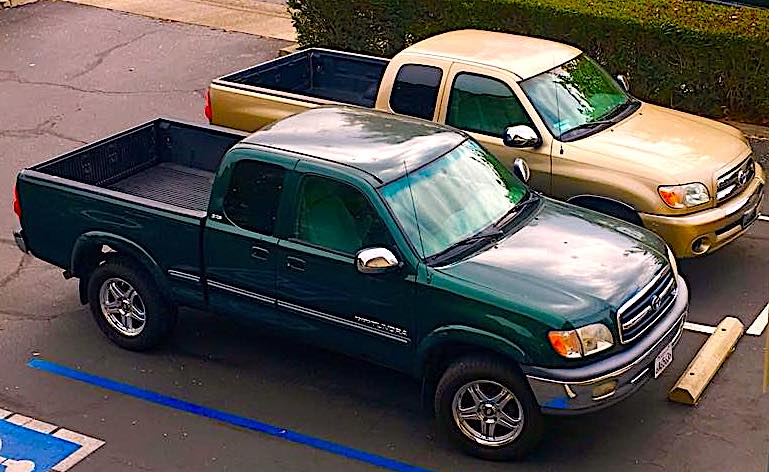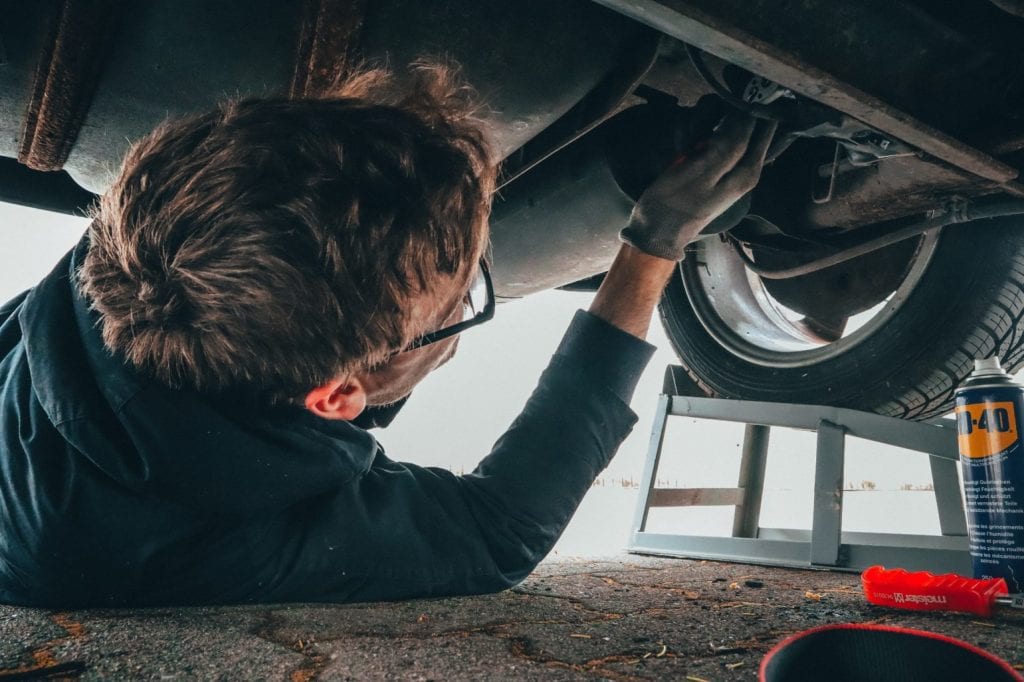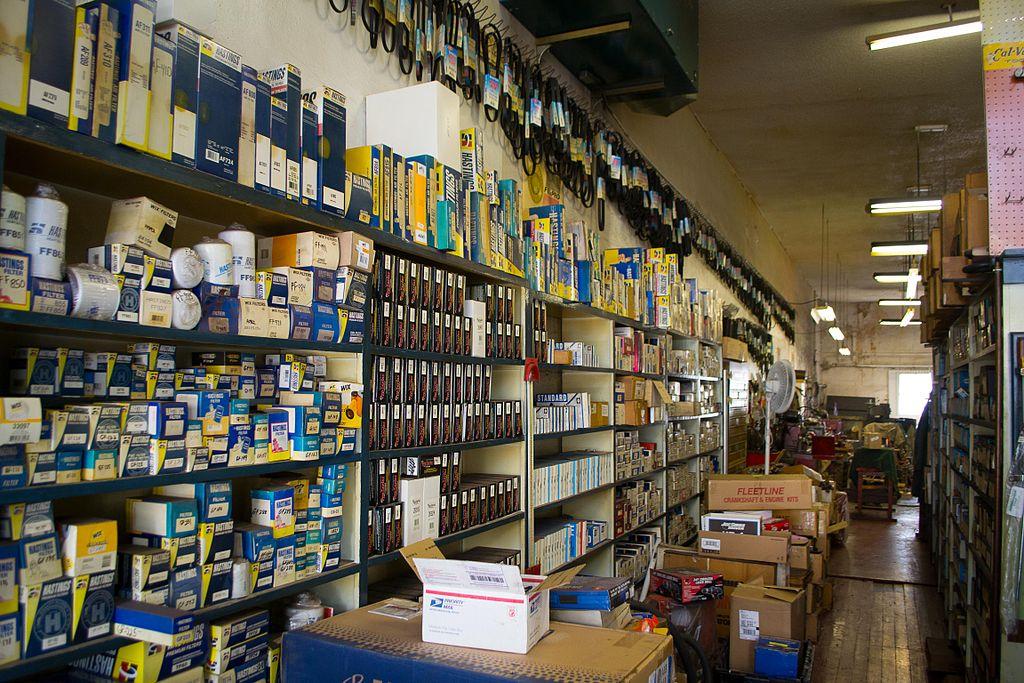Used Car Repairs: When to Fix It and When Not To

Contents
No used car is perfect. They’ve all seen use and probably some abuse, been exposed to sun and wind and rain, endured muddy shoes and Starbucks spills and parking lot scapes. Call it patina. Call it normal wear and tear. Call it what you will — it’s what makes a used car “used.”
Buying a used car saves you money, but it also means picking up responsibility for all of these deficits, demerits, and scars. Some will need to be fixed immediately. Others can be left alone – sometimes for years, sometimes for good.
Let’s put a personal angle on this. I own two first-generation Toyota Tundra pickups. The first, a 2000 “Imperial Jade Mica” SR5 Access Cab, I bought in May 1999 right as the Tundra was introduced. When my son turned 16, and the odometer on this truck ticked past 180,000 miles, I gave it to him. The second I found on AutoTrader in April of 2018 as I gifted the first to my son. It’s a 2006 “Desert Sand Mica” model, the last year for the first-generation, and it had barely 40,000 miles showing on its odometer when I paid $14,000 for it. Let’s call my older truck Green and my newer one Brown.

Over the almost 21 years I’ve owned the Green truck, I’ve learned plenty about what needs to be fixed, what I may eventually fix, and what really doesn’t ever need to be fixed. And I’ve applied those lessons to the Brown truck.
So those will be the three organizing principles for the rest of this story.
Fixes You Must Do
Some things you really have to fix. This includes all of the parts that make your car go, turn, and stop safely — like tires, suspension and steering components, and brakes. Plus anything that’s critical to keeping the heart of your car, the engine and drivetrain, healthy. So don’t hesitate, pull the trigger, and maybe even go into credit card debt if you must to get these things working right. Pronto.

Tires are the most important parts on any vehicle. Unless your car is permanently parked and used solely for playing Apple CarPlay content in blissful isolation, everything that matters depends the four contact patches where each tire meets coffee-colored pavement.
According to the Vehicle Dynamics Institute, a cop Ford Crown Victoria running on P225/60R16 tires inflated to 32 PSI has a total of only 147 square inches of rubber touching the road. That’s four slightly oversize postcards, or a rectangle roughly the size of an NFL wide receiver’s palm. In other words, not much for a 4000+ pound, V8-powered police car to rely upon when it’s going 120 mph.
That’s why the first thing to be inspected on any used car is the condition of the tires. If they don’t have much tread depth, appear to be dried out and cracked, or are more than six years old, it’s time to replace them. And don’t bargain shop to the point of buying off-brand garbage either. Kumhos and Nexens are fine, Michelins and Bridgestones better.
This advice goes for other critical systems like wiper blades, brake pedal covers, brake pads, brake rotors, steering linkages, and brake lines. All this stuff is too important to be left in crummy condition.

Changing your car’s fluids and filters on time is also a must. Sure, if you skip an oil change or let the air filter clog up with stuff, your vehicle won’t immediately grind to halt or spontaneously combust. But that doesn’t mean regular maintenance items aren’t important.
Oil and filters should be changed according to the vehicle manufacturer’s schedule, air filters should flow freely and new ones are cheap, and belt wear (particularly on overhead cam engines) should be monitored closely. For many cars, if the timing belt fails, what’s likely to ensue is catastrophic engine failure. So don’t let that happen.
Aftermarket vs. OEM Parts
Don’t cheap out when the part really matters. The Green truck’s starter failed about four years ago. I, trying to save a few bucks, went online and bought a cheap aftermarket starter and asked for it to be installed. In the Toyota 4.7-liter V8, this is not an easy process since the starter lives in the valley of the “Vee” between the cylinders under the intake manifold. So I ended up paying about $600 to have a mechanic disassemble all that, install the starter, and put it back together.
Alas, that cheap starter failed about three years later. So I had to do it all over again — but this time I had them install a new factory starter. The cheap starter was a false economy; a new high quality part would likely have lasted at least the 16 years that the first one did. Keep that in mind.

With parts that don’t really wear or that are primarily there for looks, think hard about whether it’s worth spending big bucks for OEM replacements. About ten years ago, one of the taillights in the Green truck was broken by… something. The factory replacement taillight lens runs about $150 at the dealership. But I went on eBay and found a pair of “Altezza” style aftermarket replacement lenses for only about $40. My friends made fun of my taillights for the next three years, but I saved over a hundred bucks.
Later I replaced those lenses with cleaner-looking aftermarket reproductions of the 2006 model year taillights. They were cheap too, and I can’t see any difference in function between the original parts and the cheap ones that replaced them.
Fixes You Can Postpone
Some issues may sound bad but actually don’t need to be fixed right away. Here’s a great example. Somewhere in 2004, just after my Green truck aged out of warranty, the service department at my Toyota dealer reported a “slow leak” of fluid out of the steering rack. It’s a common problem on this era’s Tundra. Apparently the seals at the end of the steering rack deteriorate over time. The dealership wanted something like $800 to disassemble much of the front end of the truck and install the new rack. But the truck was working just fine despite the leak.

So I skipped fixing the very slow leak, and guess what — it still leaks very slowly some 15 years later. If the leak had been more profound or gotten worse, it’s likely something that would have to be fixed. Steering is pretty important, after all. But this almost imperceptible leak on my particular truck has been nothing more than a minor annoyance, calling only for an occasional topping-off of fluid.
If you’re not sure whether something needs to be fixed immediately or could be postponed, try asking for a second opinion. A good repair shop will be honest with you.
Fixes You Can Skip
Some things you can simply leave broken. If it’s a part that you don’t really need or use, or that doesn’t compromise the car’s safety, why bother fixing it? Every used car should have at least a few charming flaws.
About a year after I bought my Green truck, a hole appeared in the floor mat where my right heel rests while operating the throttle pedal. I keep thinking that, if I replace the mat with a new one, the hole will appear again — and again and again. So I haven’t fixed it. And sure enough, a year after I acquired the Brown Tundra, another hole appeared in the exact same place.
Other examples you might opt not to fix: broken power window switches, screwed up seat adjusters, head units that won’t work on the AM band. There are a million things that fail as a part of a car’s natural aging process. And many of them just aren’t worth fixing. Keep in mind that everything in a car is always aging; how much do you want to invest chasing that inevitable deterioration? In many cases, it’s best to let things that don’t matter to you slide.

On the other hand, by all means spend a couple hundred bucks on a new radio if that’s important to you. After all, it’s your car, so invest in the parts that you really care about.
The Bottom Line
Some people suffer through years of new car payments to avoid the so-called risks of buying used. But knowing what to fix and when makes it relatively simple to minimize the cost of used car upkeep. And in many cases, a fix may not even be required — not something you can say about that monthly new car payment.
Don’t get me wrong. I’d love to see a new Toyota Tundra in my driveway. But these days a new one can set you back close to sixty grand. Meanwhile, my Brown truck, which cost a small fraction of that amount, continues to run just fine.
Of course, it has its flaws. It spent its early years in Palm Springs, California, where the sun relentlessly beats on paint. And, like other Toyotas of similar vintage, the paint has peeled and lifted in several spots. I want to fix it. But I’m holding off.
Because it’s a used truck. And I don’t expect things to be perfect.
Photos courtesy Wikimedia Commons and the author